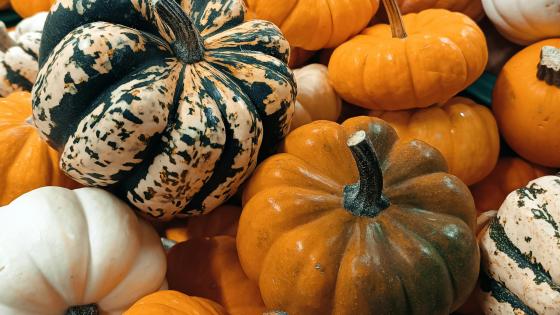
Gourds
Gourds
Gourds, which are related to pumpkins and squash, are generally grown for their hard outer rind. The fruit is dried for fall decorations, handicrafts, and functional items. The various types of gourds include hard-shell gourds (Lagenaria spp.; used for dippers, containers and birdhouses), soft-shelled gourds (Cucurbita pepo; decorative and ornamental use), and luffa gourds (their soft interior fiber is used like a sponge).
Key Requirements
| Land | Low |
| Labor | Medium to High |
| Capital | Medium |
Take the HortBizQuiz to see how much Land, Labor, and Capital you have for your operation.
Markets
- Direct to Consumer
- Farmer's Markets
- On-Farm Stands
- Local Grocery
- Auctions
Pests & Disease
Gourds are subject to the same diseases and insect pests that attack other cucurbits. The most common and damaging diseases encountered in Kentucky in recent years have been damping-off, gummy stem blight, powdery mildew, downy mildew, anthracnose, bacterial wilt, and viruses.
Costs and returns are presented as estimates. They will vary based on your farm and markets.
Costs and returns are presented as estimates. They will vary based on your farm and markets.
Challenges
Curing requires a warm, dry, dark, well-ventilated area. Do not let gourds touch during the curing process.
Opportunities
- Some growers find it beneficial to grow gourds on raised beds with black plastic and drip irrigation.
- Fall decorating ranks just behind Christmas in dollars spent on decorations per household.